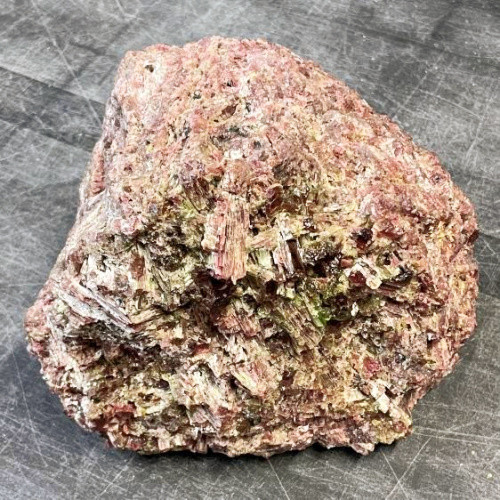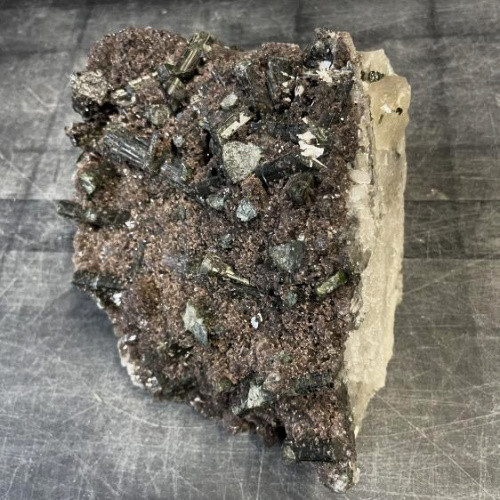Product Description
Tourmaline Watermelon Specimen 7"x5.5"x6" 4786g
Mineral Information:
Watermelon tourmaline is a variety of tourmaline that exhibits distinct color zoning, resembling the vibrant hues of a watermelon. It is named for its resemblance to the cross-section of a watermelon, with a green outer layer, a pink or red middle layer, and sometimes a white or colorless core.
The green outer layer of watermelon tourmaline is typically caused by the presence of iron, while the pink or red middle layer is due to manganese. The color zoning within the crystal is a result of variations in the concentration of these elements during its formation.
Watermelon tourmaline is highly valued and sought after for its unique coloration and beautiful patterns. It is often cut into slices or polished into cabochons to showcase the distinctive watermelon-like color zoning. The color contrast and the intricate patterns make it a popular choice in jewelry and gemstone collections.
Metaphysical Meaning:
Watermelon tourmaline is believed to possess a combination of the properties associated with both green and pink tourmaline, as it embodies the energies of both colors. Green tourmaline is associated with growth, healing, abundance, and the heart chakra, while pink tourmaline is linked to love, emotional healing, compassion, and the heart's energy.
Mineral Care:
Watermelon tourmaline, like other varieties of tourmaline, has a moderate level of durability and is considered relatively resistant to everyday wear and tear. However, it is important to handle it with care to prevent damage and preserve its beauty.
Tourmaline has a hardness of 7 to 7.5 on the Mohs scale, which means it is harder than many common materials like glass and most household objects. This hardness provides some resistance to scratching and abrasion. However, it is not as hard as gemstones like sapphire or diamond, so it can still be scratched or damaged by harder materials.
The fragility of watermelon tourmaline primarily comes from its crystal structure and the presence of internal fractures or inclusions. Like all tourmalines, it has a complex and sometimes brittle structure, which can make it prone to chipping or breaking if subjected to impact or excessive force.
Watermelon tourmaline, especially larger specimens or delicate slices, can be more susceptible to damage due to its color zoning and the potential for stress concentrations along the boundaries between different color layers. The transition between the pink/red and green sections may create areas of weakness that could fracture under pressure.
To protect watermelon tourmaline, it is recommended to store it separately from other gemstones or jewelry to prevent scratching. When wearing watermelon tourmaline jewelry, it is advisable to avoid activities that could subject it to excessive force, impact, or rough handling. It is also important to remove jewelry before engaging in activities such as sports or household chores where it could be exposed to potential damage.
Disclaimer:
No information here is intended to diagnose, treat or cure ailments or afflictions of any kind. One should always consult a medical professional if a serious issue presents itself.
Tourmaline is useful for protection and grounding.





